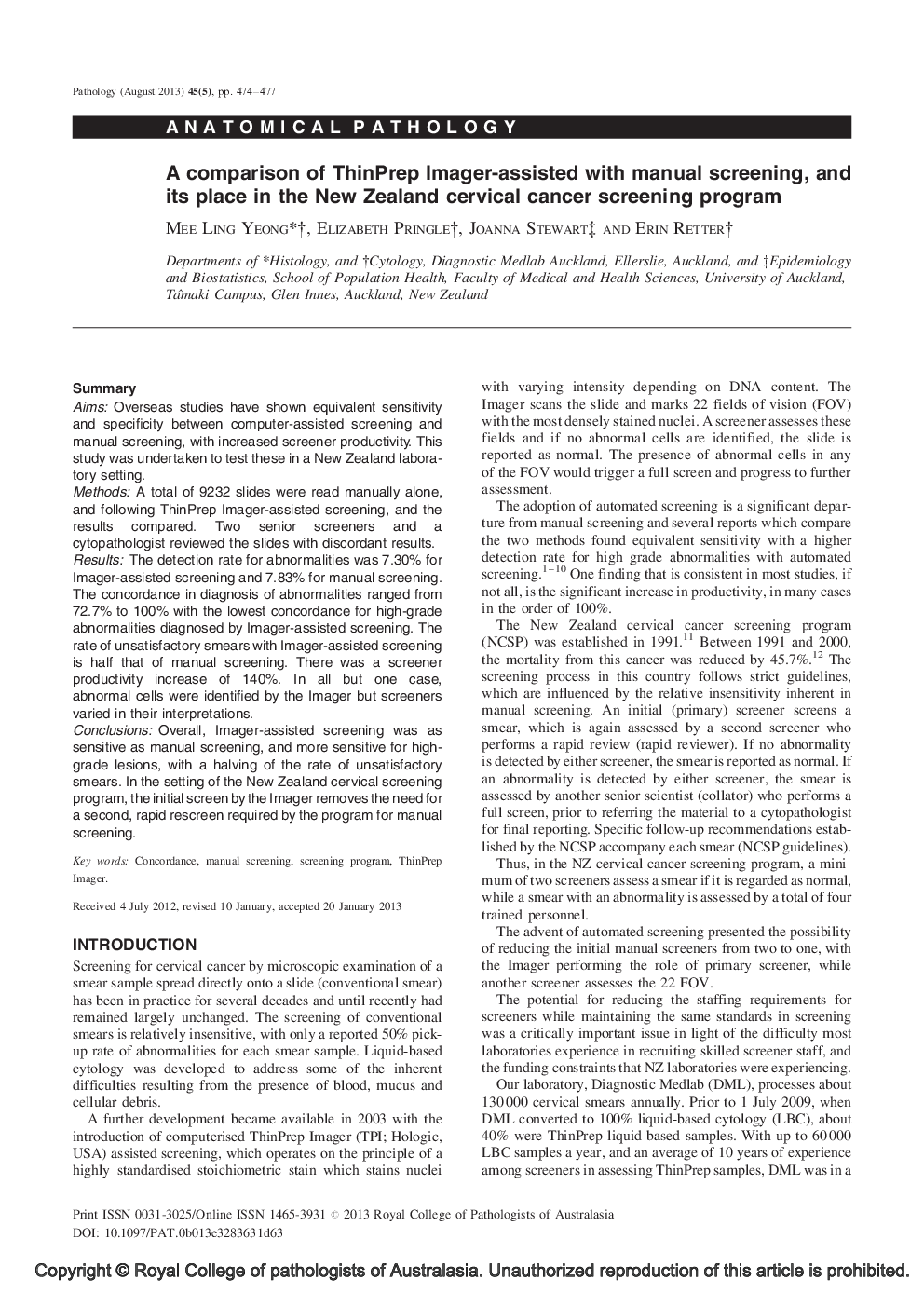| Article ID | Journal | Published Year | Pages | File Type |
|---|---|---|---|---|
| 105425 | Pathology | 2013 | 4 Pages |
SummaryAimsOverseas studies have shown equivalent sensitivity and specificity between computer-assisted screening and manual screening, with increased screener productivity. This study was undertaken to test these in a New Zealand laboratory setting.MethodsA total of 9232 slides were read manually alone, and following ThinPrep Imager-assisted screening, and the results compared. Two senior screeners and a cytopathologist reviewed the slides with discordant results. Results: The detection rate for abnormalities was 7.30% for Imager-assisted screening and 7.83% for manual screening. The concordance in diagnosis of abnormalities ranged from 72.7% to 100% with the lowest concordance for high-grade abnormalities diagnosed by Imager-assisted screening. The rate of unsatisfactory smears with Imager-assisted screening is half that of manual screening. There was a screener productivity increase of 140%. In all but one case, abnormal cells were identified by the Imager but screeners varied in their interpretations.ConclusionsOverall, Imager-assisted screening was as sensitive as manual screening, and more sensitive for high- grade lesions, with a halving of the rate of unsatisfactory smears. In the setting of the New Zealand cervical screening program, the initial screen by the Imager removes the need for a second, rapid rescreen required by the program for manual screening.
